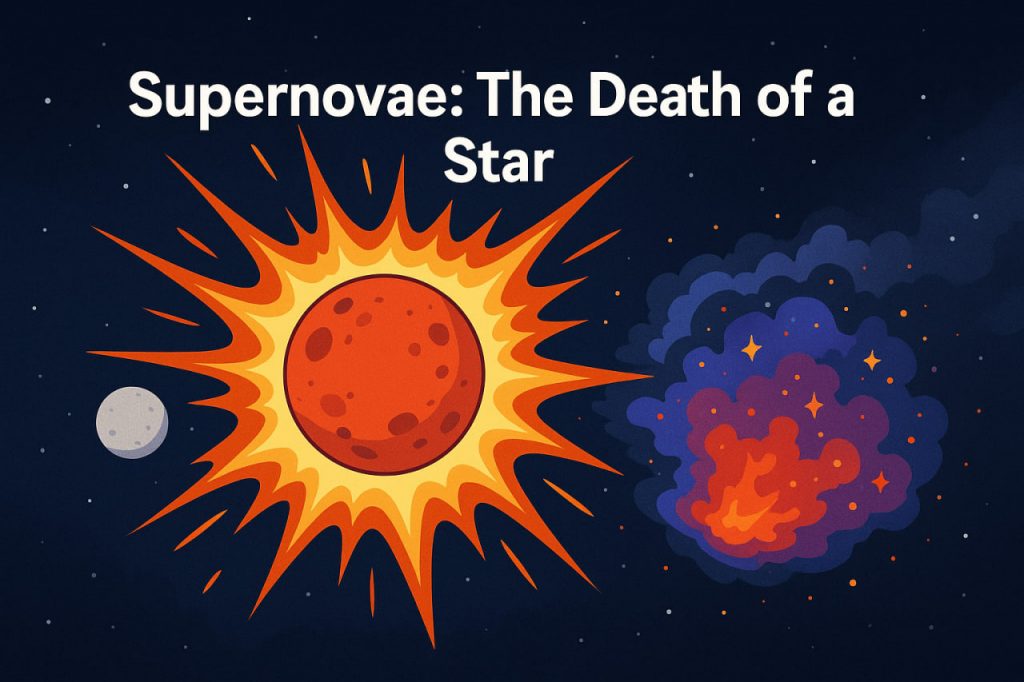A supernova is one of the most powerful and dramatic events in the universe. It marks the explosive death of a star and releases an enormous amount of energy—sometimes outshining an entire galaxy for a short period. Supernovae are not just destructive; they also create the elements that make planets, life, and even human bodies possible.
What Is a Supernova?
A supernova occurs when a star reaches the end of its life and can no longer maintain the balance between gravity pulling inward and nuclear fusion pushing outward. When this balance collapses, the result is a massive explosion.
There are two main types of supernovae:
- Type I supernova – Happens in binary star systems, where a white dwarf star pulls matter from a companion star until it becomes unstable and explodes.
- Type II supernova – Happens when a massive star (over 8 times the Sun’s mass) runs out of fuel, collapses under its own gravity, and then explodes.
The Life Cycle of a Massive Star
- Birth: A star forms from a cloud of gas and dust.
- Main Sequence: The star burns hydrogen in its core for millions or billions of years.
- Red Supergiant: As fuel runs out, the star expands and cools.
- Core Collapse: Gravity overcomes internal pressure, and the core collapses.
- Supernova Explosion: The outer layers explode outward in a burst of energy.
- Aftermath: The core becomes either a neutron star or a black hole, depending on its mass.
Why Supernovae Are Important
Although supernovae destroy stars, they play a crucial role in shaping the universe:
- They create heavy elements like iron, gold, and uranium, which are spread through space.
- They help form new stars and planets by compressing nearby clouds of gas.
- They give rise to exotic objects like pulsars and black holes.
- Their light helps astronomers measure distances and study the expansion of the universe.
In fact, the atoms in your body—including the iron in your blood—were likely formed in ancient supernovae.
What Would Happen If a Supernova Exploded Nearby?
A supernova occurring within 30 light-years of Earth could cause severe damage to our planet’s atmosphere. Fortunately, there are no such stars close enough to pose an immediate threat.
The most famous recent nearby supernova was SN 1987A, visible to the naked eye in the Southern Hemisphere.
Can We See Supernovae?
Yes. Supernovae can sometimes be seen from Earth as bright “new stars” in the night sky. Telescopes regularly detect them in distant galaxies. When a supernova occurs in our galaxy, it’s a rare but spectacular event.
Historical records show that ancient civilizations witnessed and recorded supernovae, like the Crab Nebula event in 1054 AD.
Glossary
- Supernova – A massive explosion marking the death of a star.
- Nuclear fusion – The process of atoms merging to release energy inside stars.
- Neutron star – A dense core left after a supernova, made almost entirely of neutrons.
- Black hole – A region of space with gravity so strong that nothing can escape it.
- Crab Nebula – A cloud of gas and dust left over from a supernova seen in 1054.


